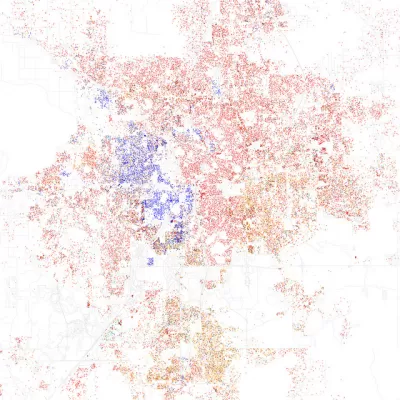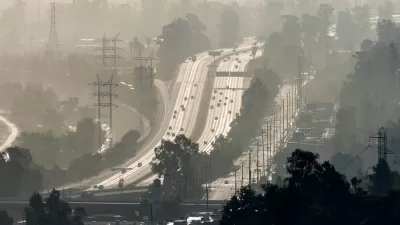Poor air quality has decimated the health of residents in this predominantly black community ringed by highways.

At the Huffington Post, Julia Craven has a deeply reported piece on air quality in one of Orlando’s poorest, most isolated neighborhoods.
“The pollution in Griffin Park [housing project] and its low-income Parramore neighborhood is violence of a kind Americans tend to ignore. But it is as deliberate and as politically determined as any more recognizable act of racial violence. What happened to Griffin Park was the sum of a series of choices made over the course of a century, the effect of which was to transmute formal segregation into the very air certain people breathe.”
The link between neighborhood air quality and neighborhood health is well established, as is the link between highway proximity and discriminatory planning.
“Although air pollution has generally decreased in the United States since the passage of the Clean Air Act of 1970, it still causes 200,000 early deaths each year. Men, poor people and African-Americans are disproportionately at risk. According to a comprehensive Harvard University study last year of air pollution in the U.S., black people are about three times more likely to die from exposure to airborne pollutants than others.”
Federal air quality standards could make an impact, but under the current president, that’s unlikely. The Trump Administration has reduced the budget of the Environmental Protection Agency by one-third, failed to update air quality maps and rolled back regulations intended to reduce carbon dioxide emissions; the founder of the EPA's Environmental Justice Office resigned in protest.
“Segregation persists,” Craven writes, “entrenched through housing and zoning policy and through the construction of urban expressways that literally turned existing racial borders to concrete. This was not an unintended consequence; this was the whole point."
FULL STORY: Even Breathing Is A Risk In One Of Orlando’s Poorest Neighborhoods

Planetizen Federal Action Tracker
A weekly monitor of how Trump’s orders and actions are impacting planners and planning in America.

Maui's Vacation Rental Debate Turns Ugly
Verbal attacks, misinformation campaigns and fistfights plague a high-stakes debate to convert thousands of vacation rentals into long-term housing.

Restaurant Patios Were a Pandemic Win — Why Were They so Hard to Keep?
Social distancing requirements and changes in travel patterns prompted cities to pilot new uses for street and sidewalk space. Then it got complicated.

In California Battle of Housing vs. Environment, Housing Just Won
A new state law significantly limits the power of CEQA, an environmental review law that served as a powerful tool for blocking new development.

Boulder Eliminates Parking Minimums Citywide
Officials estimate the cost of building a single underground parking space at up to $100,000.

Orange County, Florida Adopts Largest US “Sprawl Repair” Code
The ‘Orange Code’ seeks to rectify decades of sprawl-inducing, car-oriented development.
Urban Design for Planners 1: Software Tools
This six-course series explores essential urban design concepts using open source software and equips planners with the tools they need to participate fully in the urban design process.
Planning for Universal Design
Learn the tools for implementing Universal Design in planning regulations.
Heyer Gruel & Associates PA
JM Goldson LLC
Custer County Colorado
City of Camden Redevelopment Agency
City of Astoria
Transportation Research & Education Center (TREC) at Portland State University
Jefferson Parish Government
Camden Redevelopment Agency
City of Claremont





























